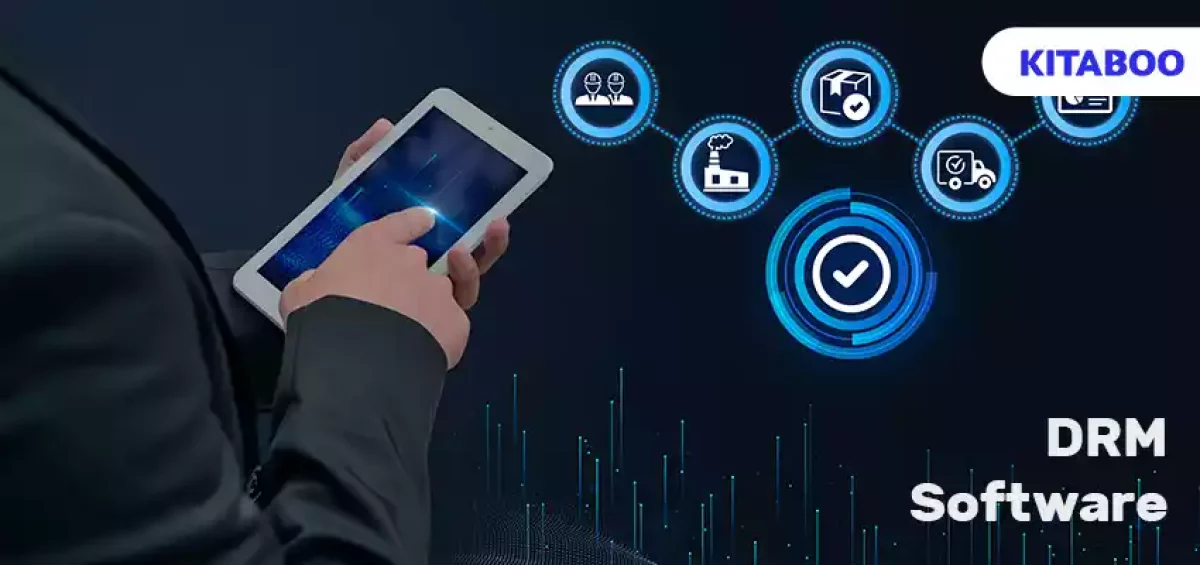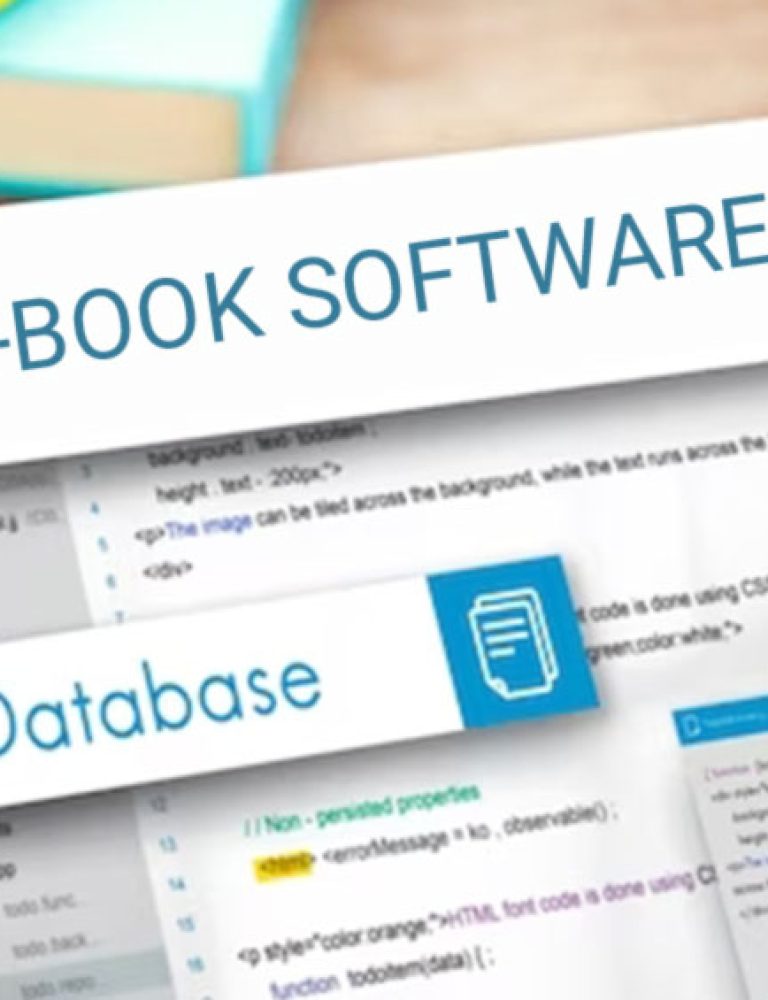Digital assets in the form of eBooks are universally trusted by content creators, educators, publishers, and business leaders. eBooks help authors create creative and compelling multimedia-enriched content that meets evolving consumer demands and expands into new channels.
However, with the increase in digital fraud, it becomes difficult to trust digital resources that sometimes fail to offer the security and protection content creators need for their eBooks. This can lead to deteriorated consumer experience, poor reader experiences, legal consequences, and brand damage.
Thus, eBooks controlled by Digital Rights Management (DRM) software are essential. DRM platforms like KITABOO, which is one of the best digital textbook platforms, utilize technology to safeguard digital assets and offer protection to companies and creators alike.
Let us evaluate the top DRM software solutions available for creating DRM-protected eBooks. We will also consider significant parameters that you must look into before selecting one.
But before we begin, let us understand what DRM software means!
Table of Contents:
I. What is the meaning and relevance of Creating DRM-Protected eBooks?
II. How to Choose the Right DRM Software When Creating DRM-Protected eBooks
- Determine the Type of Content to Protect
- Determine the Level of Protection Required
- Identify the Audience and User Experience
- Self-Hosted or Cloud-Based DRM Solutions
- Budget Considerations
- Inclusion of Dynamic Features
III. Top 5 DRM Solutions for Businesses
IV. Conclusion
What is the meaning and relevance of Creating DRM-Protected eBooks?
DRM systems refer to the implementation of advanced technologies to protect your eBooks from copyright infringement and unauthorized use of intellectual property by third parties. Various stakeholders effectively use DRM to manage their content and ensure compliance with evolving digital copyright laws.
DRM emerges as an indispensable component of creating eBooks as it facilitates rapid creation and distribution of content. It can potentially help handle various media types, monitor content storage utilization, track digital asset usage, and manage copyright expiration dates.
How to Choose the Right DRM Software When Creating DRM-Protected eBooks
The top factors that are crucial for effectively selecting the appropriate DRM software for your organization are:
1. Determine the Type of Content to Protect
Identify the specific content you need to protect. Consider whether your files will be in a fixed format or reflowable layout.
Do you want to distribute eBooks to the public or just offer white paper content to potential customers? Assessing these factors is crucial so that you can choose the right DRM software for the content you plan to design.
2. Determine the Level of Protection Required
This feature helps you understand whether you need traditional DRM software or a modern DRM system to protect your documents and offers valuable insights into how users interact with your files. You must assess the level of control you require over your files and the users’ ability to use your content.
3. Identify the Audience and User Experience
Determine who will be accessing your intellectual property. Different requirements may require a different type of DRM solution.
For instance, internal sharing among staff could be addressed with traditional DRM software, but imposing limitations on access to files requires enhanced and technologically robust DRM software.
4. Self-Hosted or Cloud-Based DRM Solutions
Cloud-based DRM software comes with exceptional consumer support factors, is more convenient, and is less resource-intensive. Opting for a cloud-based DRM software like KITABOO helps eBook creators and users protect the content and avoid unauthorized access to content.
You can also opt for self-hosted DRM solutions if your team is equipped to handle the installation, maintenance, and support of another software.
5. Budget Considerations
Determine the financial resources you can allocate to a DRM solution. Although free solutions may be available online, they may not offer the robust protection needed for your intellectual property.
An in-house or self-hosted system could accrue significant upfront costs. Alternatively, a cloud-based DRM solution involves a monthly or annual fee but offers a quicker setup process without the need for extensive investments.
6. Inclusion of Dynamic Features
You can deter content theft if you incorporate advanced DRM software like KITABOO, which comes with dynamic features like:
- Watermarks serve as a deterrent against content sharing and copying
- User-identifying information such as User ID or username, IP address, unlock and access details, and expiry dates
- Offline Access Management
- Device and Location Restrictions
- Integration with E-commerce Platforms
- Cross-Platform Compatibility
- Compliance and Standards
Top 5 DRM Solutions for Businesses
Here are the 5 best software for creating DRM-protected eBooks:
1. KITABOO
KITABOO is a cloud-based digital rights management software designed for K-12 learning, higher education publishing, training, and business requirements. This web-based content platform empowers users to create, publish, and distribute interactive, mobile-ready content effortlessly.
With robust features including content usage analytics, KITABOO facilitates informed decision-making for your business and effortlessly protects content from unauthorized usage.
It employs encryption techniques and facilitates the secure distribution of eBooks. It further helps publishers set expiration dates for digital content, provides detailed analytics and reporting capabilities, and complies with industry standards and regulations related to DRM
2. Vitrium Security
Vitrium Security offers a cutting-edge platform for securely storing documents and images. Primarily utilized to protect, control, and analyze content accessibility and usage, Vitrium Security boasts high-end DRM security features that encompass the entire operational spectrum.
The platform delivers comprehensive content management solutions such as securely sharing content, tracking file activity, and integrating with online video platforms.
3. Foxit PDF SDK
Empower your business with Foxit PDF SDK, a robust DRM software solution for document sharing and management.
This tool features a powerful Core API and compatibility across seven platforms and is trusted by organizations worldwide for its dedicated and flexible services. It integrates with business processes, streamlines workflow, and enhances productivity.
4. Caplinked
Caplinked offers secure DRM software exclusively for sharing documents, facilitating negotiations, and conducting due diligence. It is popular for its immediate availability and customized services.
This software also comes with enhanced productivity features engineered to meet all organizational needs.
5. Digify
If you are looking for an award-winning digital rights management software, then you can trust Digify. It offers comprehensive insights and protection while giving you full control to share your eBooks with others. This secure DRM solution offers integrations with workspace infrastructure and enables informed decision-making for your business.
Conclusion
When evaluating your DRM software, it’s crucial to consider the user experience.
Select the best software that can help you access content using a straightforward process and offer you exceptional support channels associated with user access. Protect your eBooks with a balanced DRM system that offers stringent eBook content protection and seamless user access.
Top digital textbook platforms, like KITABOO, offer an advanced DRM system that helps content creators and publishers monitor their content security. It facilitates easy content distribution through various channels and offers protection for multiple content types.
Discover How An Ebook Conversion, Publishing & Distribution Platform Can Help You
Kitaboo is a cloud-based content platform to create-publish & securely distribute interactive mobile-ready ebooks.
You May Also Like









